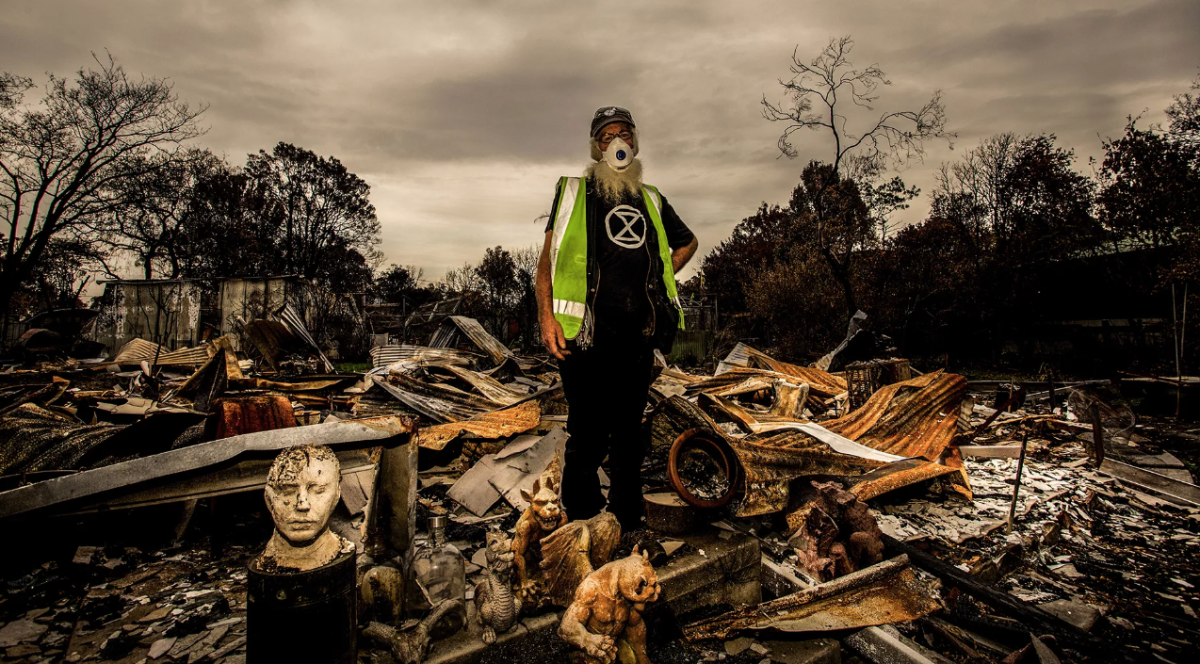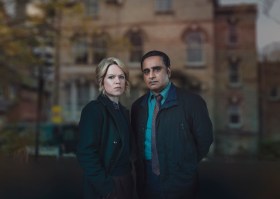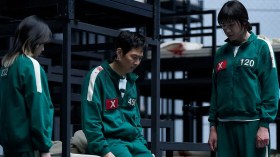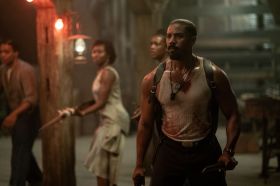On New Year’s Eve 2019, the Victorian coastal town of Mallacoota made global headlines after nearly being wiped out by the Black Summer bushfires. You’ll recall the nightmarish images of frightened, masked people – a mix of holidaymakers and year-round residents – seeking shelter on the beach under blood-red skies, or even taking to the water in small boats.
When 2020 dawned, 123 homes were gone, and locals quickly realised their town’s recovery would be up to them. This suited the town’s self-sufficient character, which had previously led some residents to jocularly secede as the People’s Republic of Mallacoota.
Hence the title of this six-part, 30-minute observational documentary series, which follows the town’s recovery efforts over the next 18 months. Executive producer Joe Connor of Renegade Films (Rockwiz, Wilfred) had already made the Black Saturday documentaries Inside the Firestorm and Aftermath: Beyond Black Saturday. He arrived in Mallacoota five weeks after the fires, and was instantly struck by its residents’ fiercely litigated opinions.
While Mallacoota’s geographic location made it especially vulnerable to bushfire, it also solidified its sense of independence. Three and a half hours’ drive from the East Gippsland Shire offices, and over six hours from Melbourne, Mallacoota has never felt well served by centralised government.
Read: ABC’s Space 22 convinces on art therapy
Here, people tend to hold strong views and argue them vehemently because they all love this place so much. Now, the town’s challenge was to create a recovery plan that made all residents feel heard and included, and that led them to the one thing they resist most – compromise.
Another documentary might have focused on the trauma of Mallacoota’s loss, and fed on the raw emotions of residents buffeted by the Covid-19 crisis on top of the bushfire. To the credit of executive producers Joe and Ken Connor, and writer–director Tony Jackson, People’s Republic of Mallacoota is an intriguing exploration of political self-determination in an era of chronic climate crisis.
Federal Election 2022
I’m glad I waited to review this series until after the federal election, because I’d have been more cynical if I’d reviewed it when it first aired in April. I couldn’t have helped comparing Mallacoota to Lismore and other flood-devastated regions, where governments more interested in oligarchy than in commonwealth deliberately abandoned climate crisis-affected communities to lower our expectations of our political leaders.
However, Australians have strongly rejected ‘small government’ at the ballot box, and independent candidates backed by grassroots community campaigners had much-analysed success. Perhaps People’s Republic of Mallacoota now represents an important lesson – for the new Federal Parliament as well as for any community – on how to move forward productively from even strident disagreement.
The series’ focus on governance surprised me; I’d expected it to be much more about the practicalities of rebuilding Mallacoota, or feel-good stories of resilience. But I really appreciated how gently it observes that people are connected politically on an everyday level.
Read: Hillsong: A Megachurch Exposed review
I’ve always felt the way for us to survive total societal collapse is to form horizontal grassroots associations. In fiction, this has been dubbed solarpunk. But maybe Mallacoota offers a pilot study for a genuine anti-zero-sum approach to governance: a template for how to be fairest to most people so that we can all live with each other, rather than for one group to ‘win’ while another group ‘loses’.
The series spends much of its early episodes mapping its historical and cultural terrain. This is Bidwal, Gunaikurnai, Monero and Yuin country, nestled between two national parks and two rivers right near the NSW border. As the series explains, its earliest settler-colonists were farmers. For many years Mallacoota was only reached by ferry from Eden, NSW; it’s still a one-way drive off the Princes Highway.
There’s an unobtrusive voiceover from writer and broadcaster Elly Varrenti, but the series shines most brightly as a character study of Mallacoota’s diverse residents, 12 of whom were democratically elected to the Mallacoota and District Recovery Association (MADRA). An early, steadying presence is photojournalist Rachel Mounsey, whose beautiful portraits document her community’s grief and pride with kindness and solidarity, even though a quirk of fate preserved her own house.
Bruce Pascoe and Don Ashby
Another engaging face is the Reverend Jude Benton, a young, chirpy Kiwi vicar who took a three-year post at St Peter’s Uniting Church and decided to stay. She has made determined efforts to overcome her outsider status – including radio church services during Covid lockdowns.
Local author, Aboriginal agriculture advocate and CFA volunteer Bruce Pascoe appears, as does artist and poet Don Ashby, a bearded bohemian larrikin who lives with his two equally hirsute musician sons. One of the most emotional storylines is that of primary-school teacher Jess Van Swol, who feels the loss of her house profoundly, and focuses on making a meaningful new home elsewhere.
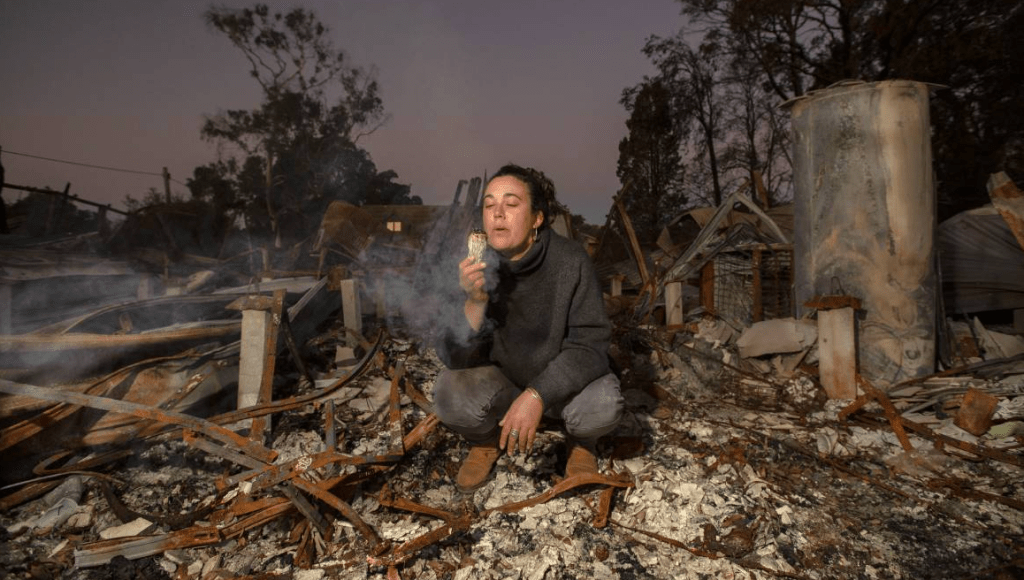
The participants seem to have trusted director Tony Jackson over the series’ 18-month shoot, so that he naturally captures their values and personalities. I enjoyed meeting them all, from doughty CFA volunteer Lyn Harwood to gentle young environmentalist Bryce Watts-Parker, and ex-cop Mark Tregellas and his wife Cate, who are clearly accustomed to being listened to.
As one resident observes, Mallacoota is a microcosm of Australian society. But unlike in a city, where you can avoid or ignore people you disagree with, in Mallacoota you have to live alongside neighbours who have divergent values and politics.
Rather than didactically positioning the participants as reality TV-style ‘characters’ and relishing their conflict, the documentary lets the viewer decide how to see them. We meet real estate agents, farmers, CFA captains, abalone divers and surfers, all steered with a brisk but light hand by Jenny Lloyd, a retired Navy woman who comes to lead MADRA.
The series works hard to represent its participants fairly. It honours their trauma and doesn’t optimistically gloss over the logistical, financial and bureaucratic barriers they face. And People’s Republic of Mallacoota is to be commended for making their wins feel earned, not manufactured by slick TV editing. I found myself deeply involved in their ultimately successful efforts to improve their community.
People’s Republic of Mallacoota
Producers: Joe Connor, Lucy Maclaren, Ken Connor
Executive Producers: Joe Connor, Ken Connor
Director: Tony Jackson
Writers: Tony Jackson, David Collins, Joe Connor
Narrator: Elly Varrenti
People’s Republic of Mallacoota is now streaming on ABC iview
Actors:
Director:
Format: Movie
Country:
Release:
